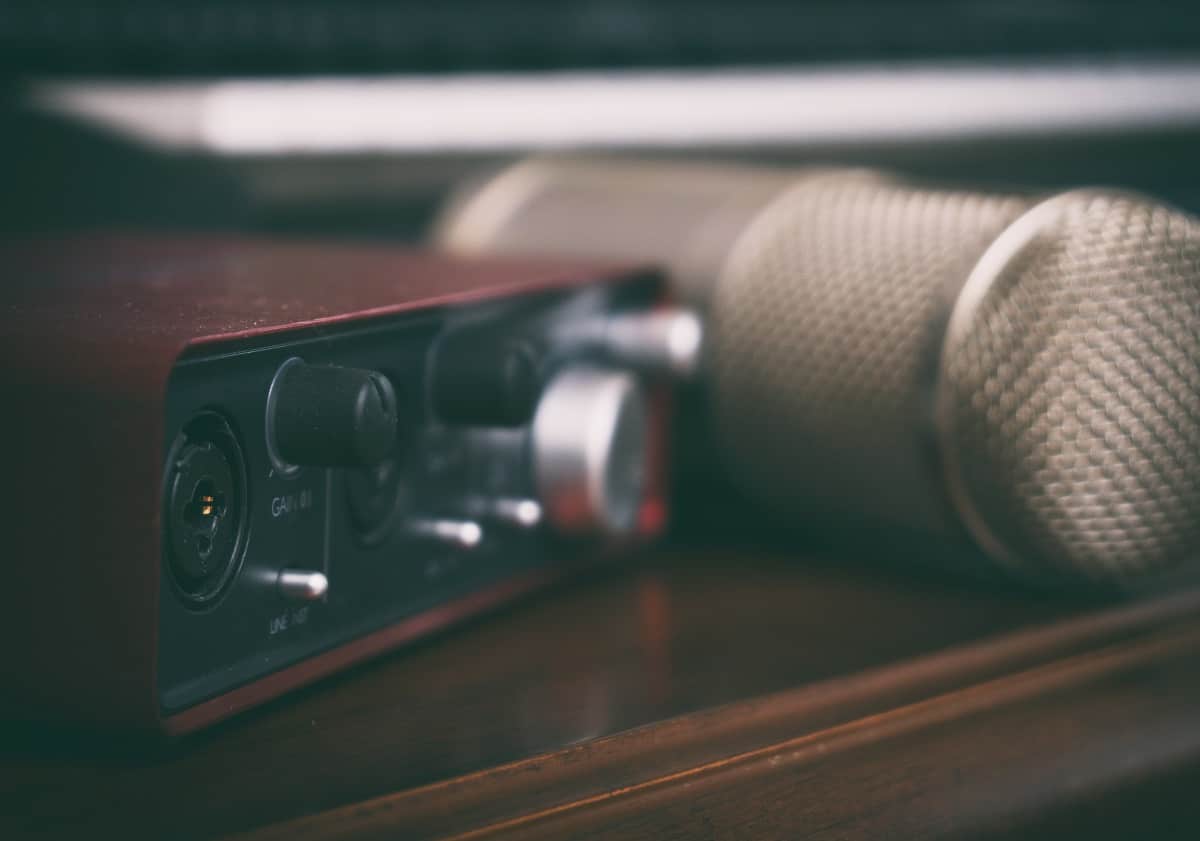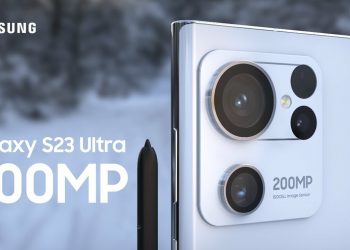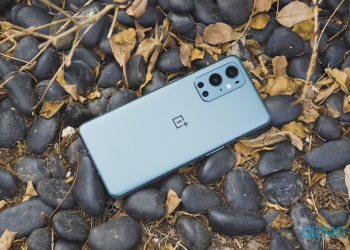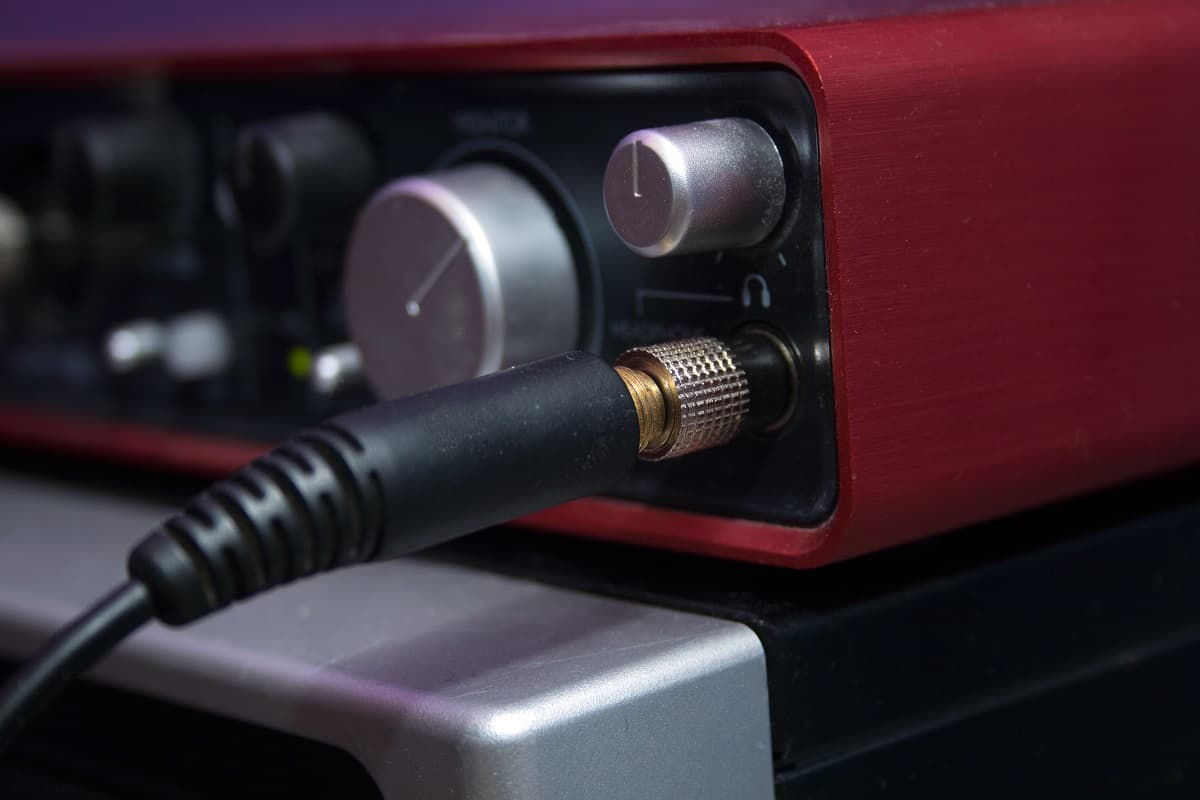Updated on April 2nd, 2022
If you’ve ever thought about singing or performing other activities that require recording vocals, such as hosting a podcast, you will need a microphone.Each microphone needs to be connected to an audio interface.
However, there are USB microphones which have an integrated audio interface. This begs the question: Do you actually need an external audio interface to record vocals or is a USB microphone good enough on its own? Let’s see.
Entry-Level Recording
Right off the bat, you should know that you don’t have to get an audio interface right away. If you’re just starting out, a USB microphone will do just fine; it’s a handy and affordable way to get started. Besides actually recording your voice and having an integrated audio interface, it also has an integrated AD (analog to digital) converter, as well as a preamp.
Unfortunately, USB microphones don’t have a very good reputation. Although USB microphones come with very different price tags, many consider an outboard audio interface to be better. On the other hand, not everybody wants to sing for a living. If this is your case, or if you just want to stick to podcasting, you’re also going to be covered for years to come.
Also, keep in mind how easy it is to connect such a microphone to a computer. You only need to plug in the USB cable and you’re good to go. That said, even if you can afford an audio interface, a USB microphone is a good starting point.
When Should You Get an Audio Interface?
You should look at an audio interface strictly as an upgrade to a USB microphone setup. In other words, if you already have a USB microphone, you should get an audio interface when it’s no longer good enough.
Another scenario in which you need to get an audio interface is if you’re playing certain instruments, or just a lot of them in general. If you’re only playing the acoustic guitar, you probably shouldn’t stress about getting an audio interface just yet. Having only the mic might help, but the lack of flexibility might be the microphone’s downfall.
The Main Advantages of Audio Interfaces
One of the biggest advantages of having an audio interface is the fact that it can capture sound very reliably and from multiple sources. Whether the source is a microphone or any instrument,it can easily transfer the sound signal to a computer.
Also, if you’re sticking with computer speakers, you can connect more powerful speakers to the audio interface. This mainly goes for active studio monitors, which you can connect to your computer, but the result is far from ideal. Studio monitors are also important for making music in general due to their more accurate reproduction of music.
The audio interface is a very powerful device as it gives you complete control over your recordings, with gain controls and a host of inputs and outputs. Speaking of control, it even lets you plug in your guitar or bass for recording or rerouting.
Audio Interface Components for Recording Vocals
Inside each interface, there are a lot of components. Some of these are important for making beats, while others are for recording vocals. Here are some of the most important for the latter.
Preamps
Most audio interfaces have an integrated preamp. This piece of hardware amplifies the incoming audio signals so that they are high enough in voltage for your amplifier or active studio monitors. When recording vocals, especially with an instrument to go with it, having a good preamp is highly beneficial. Besides this, you also won’t have to stick close to your microphones at all times, making it even more useful.
Having a powerful preamp can also reduce noises that are otherwise hard to remove. If you’re into professional equipment, keep this in mind.
Phantom Power
There are different microphones aimed at different aspects of recording. The best sort of microphone for vocal recording is the condenser microphone. These can capture a greater range of frequencies than dynamic microphones, but in order to work, they require an external power source or phantom power. Most audio interfaces have a large enough power supply that they can supply phantom power to the microphone.
Latency
Last but not least is the latency. In other words, latency is the delay that occurs when transferring audio signals to a computer. Since this happens while recording with a microphone, keeping it down to a minimum is especially important for recording vocals. Should the latency be too noticeable, the singer might hear his own recording, so the whole setup becomes near unusable.
Conclusion
Whenever you start wondering if you should get an audio interface regardless of what you’re trying to accomplish, the answer is usually the same: You probably don’t need it if you’re just starting out or if you don’t have professional ambitions. Otherwise, you might as well get it sooner rather than later. The only real issue with an it is the price since you need to get a new microphone as well.
See related topic:
Best Professional Audio Interface of 2021 Complete Reviews with Comparisons.
Best Toaster in the U.S. That Are Worth Buying 2021 Acekool Toaster TA1
Best Stand Mixers in the U.S. That Are Selling Like Hot Cakes 2021 Acekool Stand Mixer
We hope you love our reviews! For your information, we do earn money from commission in the link in the content! For more information click here!














